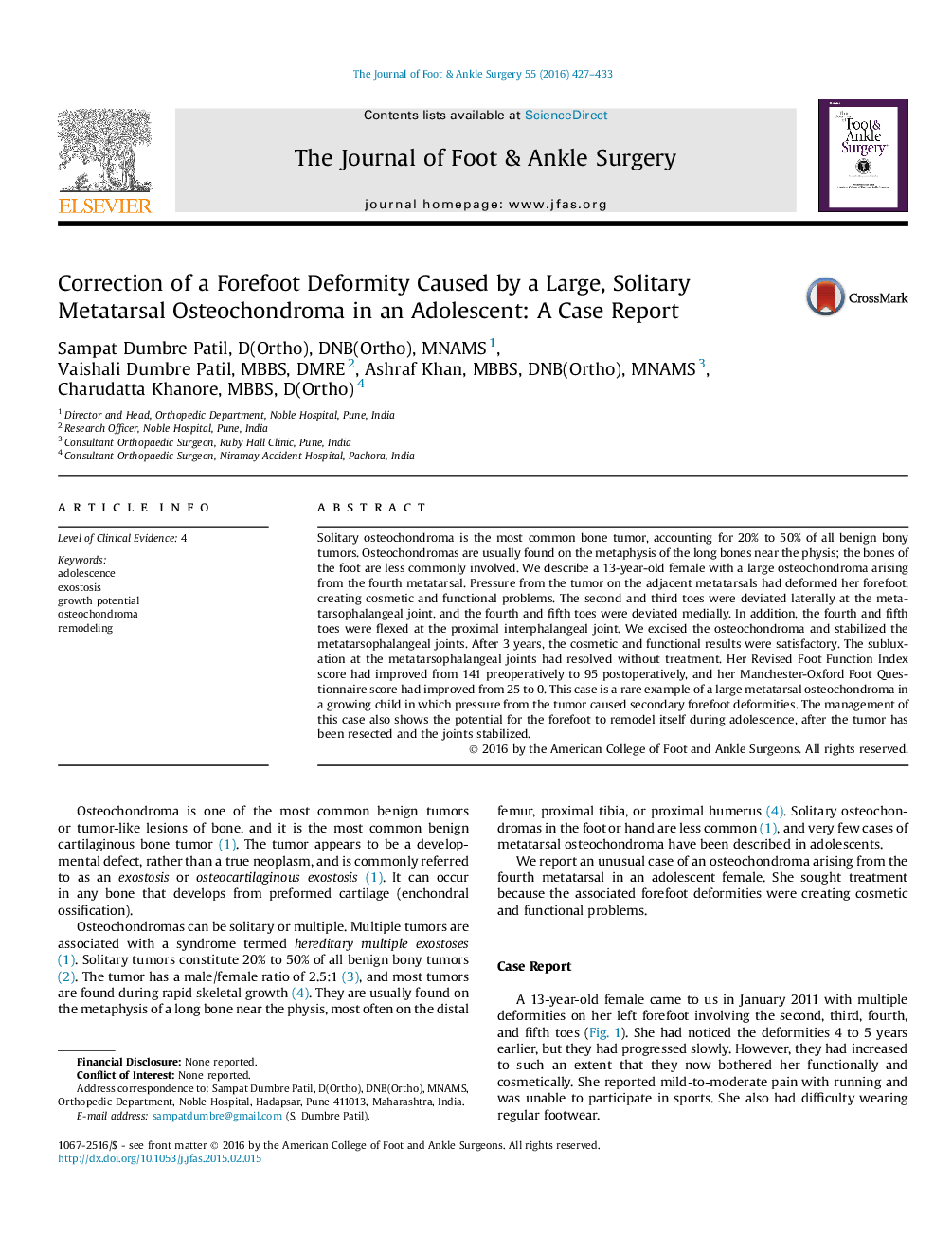| Article ID | Journal | Published Year | Pages | File Type |
|---|---|---|---|---|
| 2712924 | The Journal of Foot and Ankle Surgery | 2016 | 7 Pages |
Solitary osteochondroma is the most common bone tumor, accounting for 20% to 50% of all benign bony tumors. Osteochondromas are usually found on the metaphysis of the long bones near the physis; the bones of the foot are less commonly involved. We describe a 13-year-old female with a large osteochondroma arising from the fourth metatarsal. Pressure from the tumor on the adjacent metatarsals had deformed her forefoot, creating cosmetic and functional problems. The second and third toes were deviated laterally at the metatarsophalangeal joint, and the fourth and fifth toes were deviated medially. In addition, the fourth and fifth toes were flexed at the proximal interphalangeal joint. We excised the osteochondroma and stabilized the metatarsophalangeal joints. After 3 years, the cosmetic and functional results were satisfactory. The subluxation at the metatarsophalangeal joints had resolved without treatment. Her Revised Foot Function Index score had improved from 141 preoperatively to 95 postoperatively, and her Manchester-Oxford Foot Questionnaire score had improved from 25 to 0. This case is a rare example of a large metatarsal osteochondroma in a growing child in which pressure from the tumor caused secondary forefoot deformities. The management of this case also shows the potential for the forefoot to remodel itself during adolescence, after the tumor has been resected and the joints stabilized.
